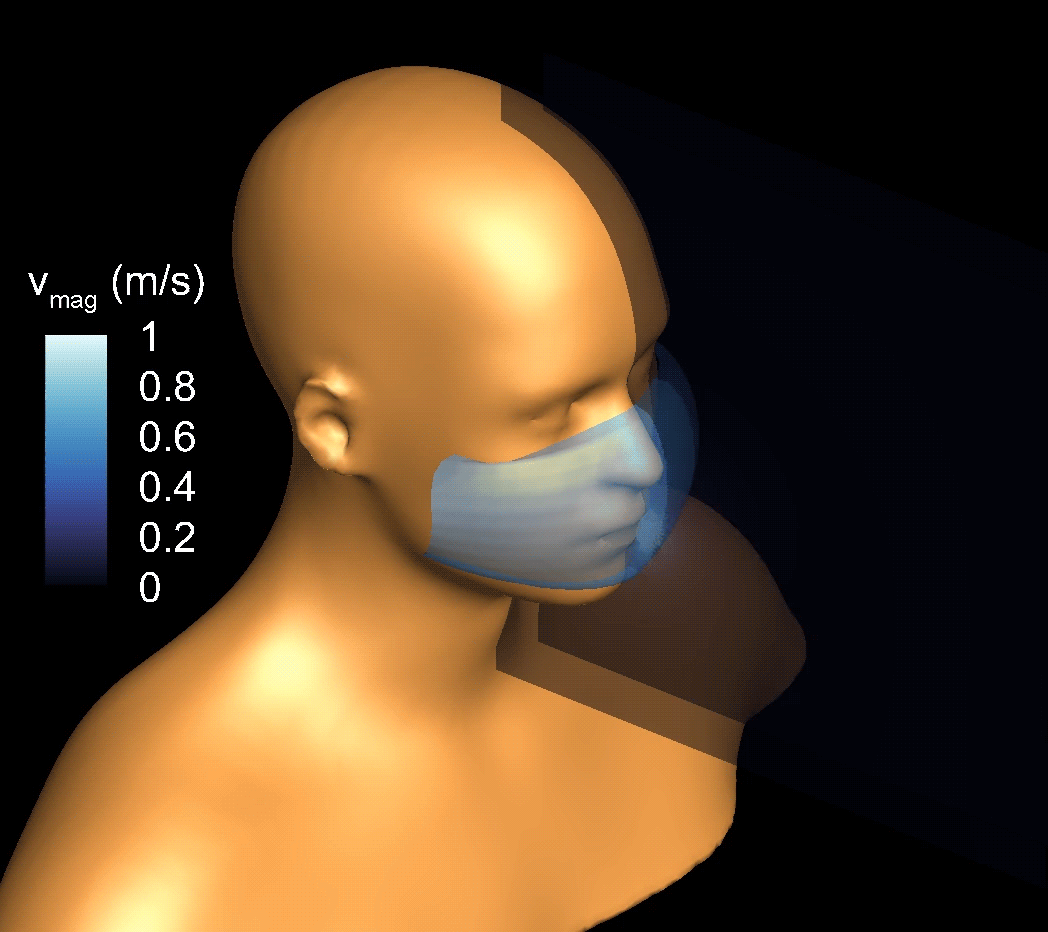Overview
- Use physics based modeling and simulations of aerodynamics and fluid-structure interaction to characterize the performance of commonly used face masks.
- Model includes wide range of facial features found among the population. (3) Use the simulations to help design more effective face masks.

A computational simulation of a cough shows the airflow velocity of droplets moving through a simple face mask.
Investigators:
Rajat Mittal, Professor of Mechanical Engineering, Johns Hopkins University
Jung-Hee Seo, Associate Research Professor of Mechanical Engineering, Johns Hopkins University
Koroush Shoele, Assistant Professor of Mechanical Engineering, Florida State University